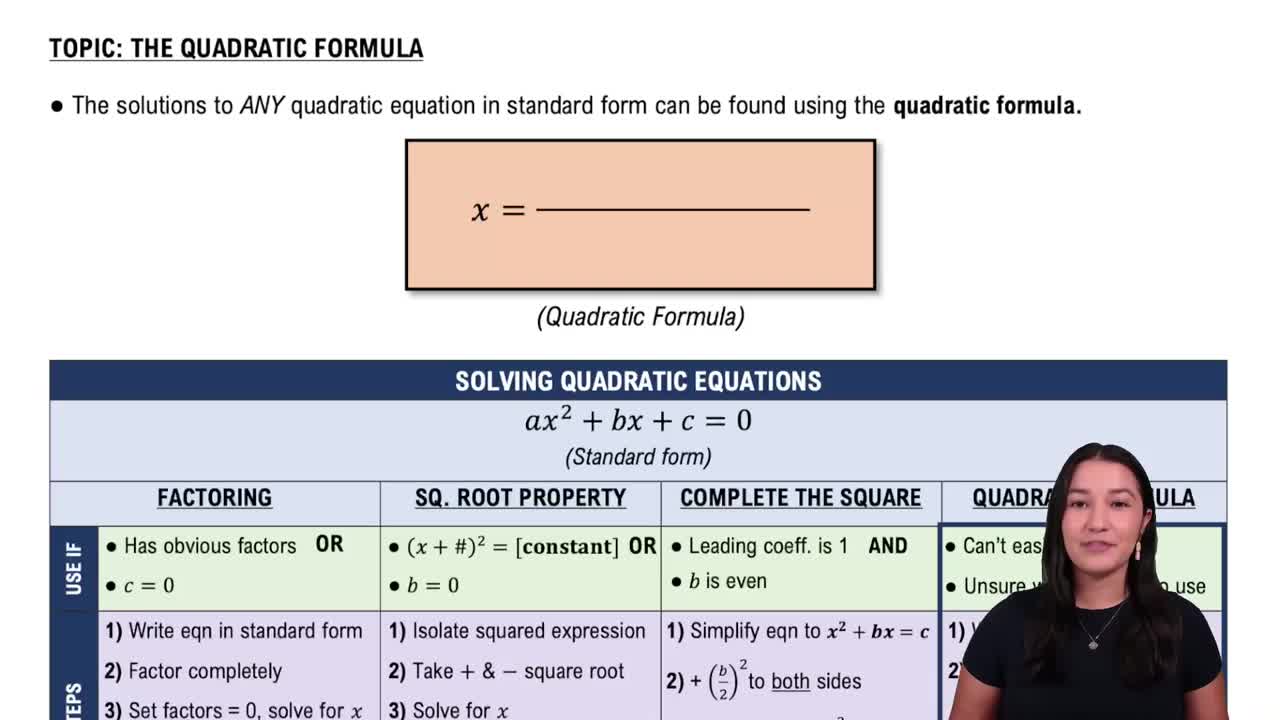1. Equations & Inequalities
The Quadratic Formula
1. Equations & Inequalities
The Quadratic Formula
Additional 2 creators.
Learn with other creators
Showing 5 of 5 videos
Practice this topic
- Multiple Choice
Solve the given quadratic equation using the quadratic formula.
444views2rank1comments - Multiple Choice
Solve the given quadratic equation using the quadratic formula.
374views3rank - Multiple Choice
Determine the number and type of solutions of the given quadratic equation. Do not solve.
363views4rank - Multiple Choice
Determine the number and type of solutions of the given quadratic equation. Do not solve.
311views2rank - Textbook QuestionMatch the equation in Column I with its solution(s) in Column II. x^2 = 25311views
- Textbook QuestionMatch the equation in Column I with its solution(s) in Column II. x^2 = -25229views
- Textbook QuestionUse Choices A–D to answer each question. A. 3x^2 - 17x - 6 = 0 B. (2x + 5)^2 = 7 C. x^2 + x = 12 D. (3x - 1)(x - 7) = 0 Which equation is set up for direct use of the zero-factor property? Solve it370views
- Textbook QuestionAnswer each question. Answer each question. Unknown NumbersUse the following facts.If x represents an integer, then x+1 represents the next consecutive integer.If x represents an even integer, then x+2 represents the next consecutive even integer.If x represents an odd integer, then x+2 represents the next consecutive odd integer. Find two consecutive integers whose product is 110.652views1rank








